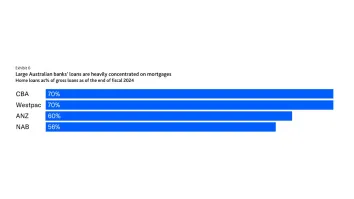Technology Revolutionizes Capital Markets Platforms in Japan
By Eiichiro YanagawaThe focus for financial and capital markets have shifted to a balancing act of monetary tightening to lower inflation without tipping into recession.
Post-pandemic capital markets
The year 2022 brought changes, as capital market players grappled with challenges in the post-pandemic world. A fundamental rethinking and assessment was imminent not just for capital markets but across consumer lifestyles overall—from private consumption to medicine, education, and more. With the end of historically low interest rates in the US and other Western nations, the focus for financial and capital markets seems to have shifted to the balancing act more monetary tightening to control and lower inflation without tipping into recession.
However, the speed of change and market volatility when it comes to interest rates, foreign exchange rates, and securities has exceeded anything anyone anticipated, and the resulting scale of change and exit point remain unclear. Right now, perhaps the only certainty is that innovation will continue and will be driven by technology.
This post is based on the results of Celent’s 2022 fall survey on technology-driven innovation in capital market platforms in the Japanese market. The survey highlights the efforts of market participants to overcome challenges and blaze new trails in post-pandemic capital markets. Below is a summary of key findings and the outlook going forward.
Survey results and analysis
1. Change in IT Initiatives
Growth strategies and the role of technology: IT initiatives changed more after the pandemic than might be imagined. In our 2019 survey, the back office was the highest-priority IT area (45%), followed by the front office (24%) and client relations (21%). With 2022 came a change in IT initiative priorities. Survey respondents put the front office as the top priority (33%), followed by client relations (28%), which tied with the back office (28%). In the process of weathering and overcoming the pandemic, market participant growth strategies and the role of technology changed, undergoing a shift in priorities: the focus moved from the back office to the front office and became more client centric.
Initiatives and challenges: In 2019, the predominant challenges were items that respondents planned to address through trading technology architecture. Restructuring of business lines was the top priority (27%), followed by cost-cutting (22%) and regulatory response (22%). In 2022, IT and operational efficiency logged the most responses for top priority (26%), followed by a regulatory response (21%) and client experience (21%). In short, having emerged on the other side of the pandemic experience, market participant awareness of challenges has shifted, and improving the client experience and operational efficiency have become higher-priority agenda items.
Signs of change: Market participants are facing increasing difficulties in procuring IT resources. In-house resources remain the most important item, but they have decreased in degree from the previous survey (dropping from 47% to 38%). Survey responses indicated some signs of change: results saw a jump in the importance of existing vendor resources (rising from 19% to 25%), a slight increase in outsourcing (6% to 8%) and fintech (3% to 6%), and a marginal decline in custom-made resources (SI and consulting: 6% to 4%).
2. Responding to regulatory change: Challenges and priorities
Reflecting on past efforts to respond to regulatory change: The majority of responses indicated a significant impact from the shift to T+2 securities settlement (67%) and T+1 government bond settlement (48%). Several respondents indicated that a major impact had been felt in the area of system renewals, back office business operations, and system structures and that changes to business flows were initiated to shorten processes and boost efficiency. At the same time, most respondents said they had wrapped up efforts to respond to the requisite regulatory changes, while only a handful of companies perceived the new system as a business opportunity and had started planning and developing new products and services.
Challenges and priorities for complying with future regulatory change: Many respondents anticipate a significant impact resulting from the extension of Tokyo Stock Exchange trading hours (67%) and the update of the cash equity trading system (48%). In addition, more than 30% of the respondents noted the impact of the migration to T+1 for US stocks and the inclusion of English characters in securities codes. At present, it would be fair to say that market participants still lack sufficient knowledge and experience of these new systems.
3. Modernization challenges: Cost and resilience
Technology costs, resilience, and legacy modernization initiatives: The area where most respondents (67%) indicated they wanted to gain resilience going forward was the entire trading lifecycle (TLC)—optimizing data connections and pre-/at-/post-trading processes. The predominant response was a desire for company-wide technology and data optimization as a wellspring for securing “future resilience,” above and beyond closed-sector initiatives such as post-trade (43%), at-trade (33%), and pre-trade (33%).
Priority areas for legacy modernization: The overwhelmingly dominant response for modernization was IT sourcing model optimization (e.g., maintain in-house developed systems, use vendor systems, optimize outsourcing/managed services, accelerate the use of cloud, 71%), followed by infrastructure optimization (e.g., enterprise-wide collateral data pooling and margin management, robust cross-merging capabilities, integrated reporting, real time view of collateral, 57%). Although system modernization initiative areas are diverse, when it came to methodologies, optimization of sourcing and infrastructure were common priorities.
The current state of platform optimization: While respondents answered that they were tackling platform optimization as a top-priority issue, they noted that available options only continue to increase (38%). Some 44% of respondents said the issues (e.g., skill sets, implementation capacity, motivation, and cost) have more to do with in-house resources than with proposals from vendors, making it clear that the barrier to innovation lies with in-house resources. Efforts at each company indicated a shift from “departmental optimization to overall optimization” and “renewal of enterprise infrastructure replacing point solutions.” Respondents indicated a need for reform and innovation in TLC, infrastructure, and sourcing models to push current budgets, personnel, legacy systems, and know-how to the next level.
Parlaying market change into business opportunity
Market participants find themselves in a structural predicament amid an unavoidable transformation as they are squeezed by a trilemma of demands that include constant regulatory change, ever-evolving client needs, and the need for improved profitability. Celent reiterates its proposition that companies look to technology as an enabler to break out of this trilemma.
Celent has advocated for market players to seek platform innovation in capital markets—that is to say, a paradigm shift in the financial services industry and securities settlement services—rather than look to repeated patchwork cosmetic fixes to deal with anticipated impacts. These initiatives will presumably be achieved by financial institutions and technology vendors that simultaneously pursue innovation in three different areas:
- Business Model Innovation
- System Architecture Innovation
- IT Management and Sourcing Model Innovation




















 Advertise
Advertise










